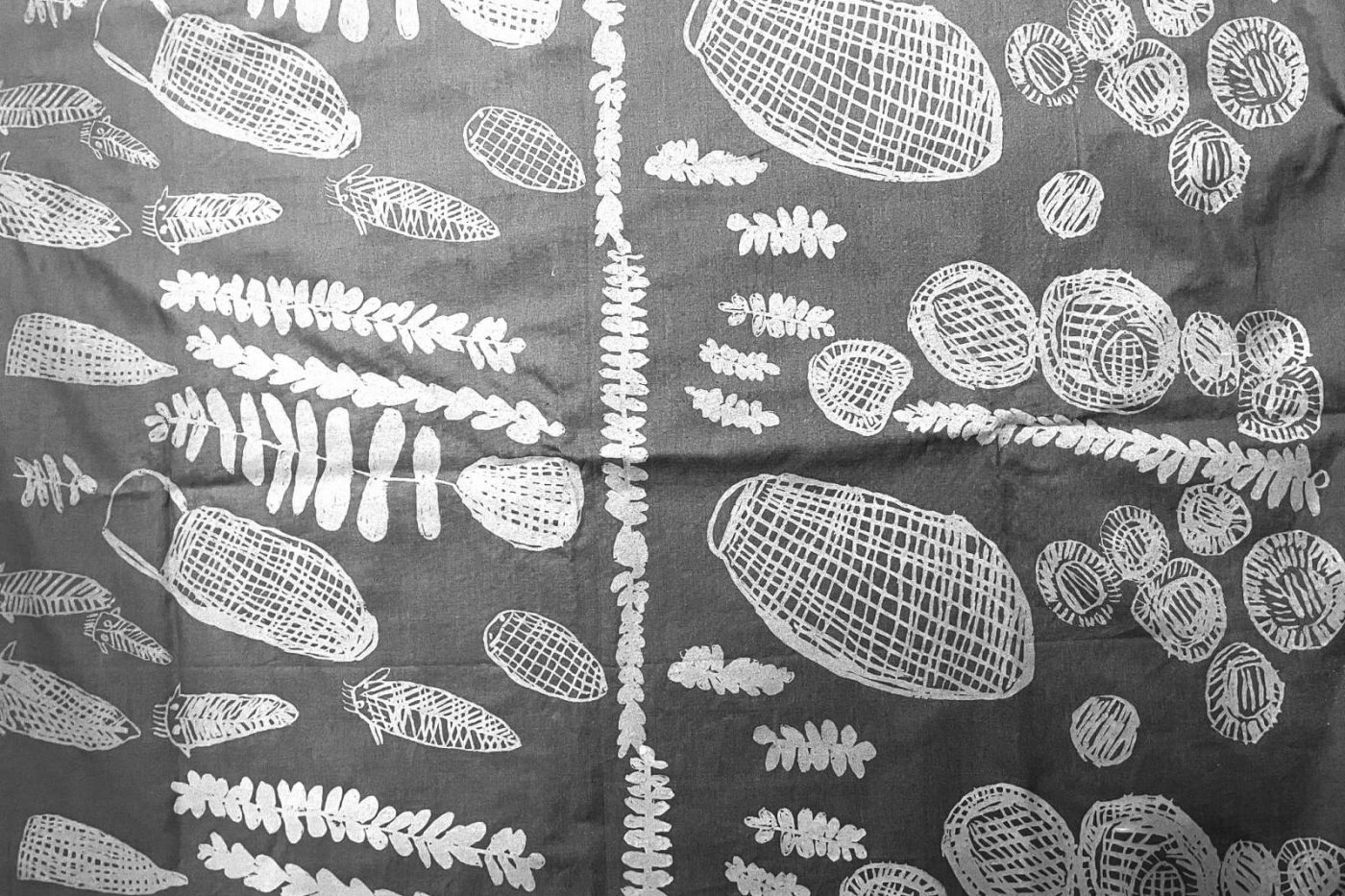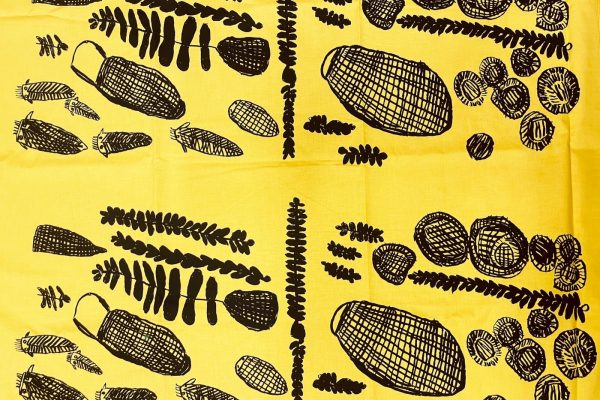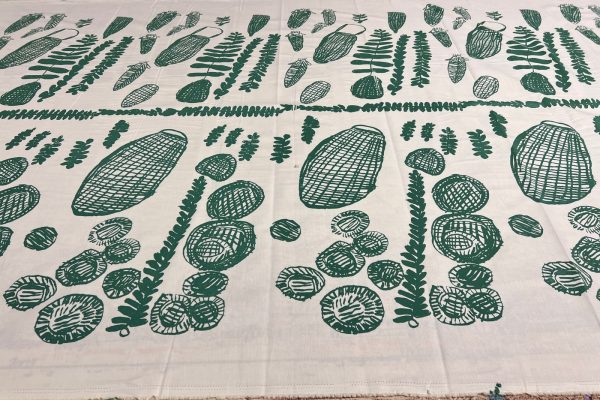Kate Miwulku (dec)

Biography
1939-2011. Born Manayingkarírra/Maningrida, west Arnhem Land, Northern Territory. Lived and worked Manayingkarírra/Maningrida. Ndjébbana language.
Kate Miwulku’s practice includes linocuts, etching, bark paintings and sculpture, which thematically explore cultural practices and traditions, predominantly those surrounding food. Dilly bags and fish traps, in particular, are repeatedly depicted throughout Miwulku’s work.
Miwulku has been included in a number of group exhibitions, including Maningrida Print Show, Maningrida Arts & Culture, Darwin (2004); Threads of Time, Burrinja Gallery, Upwey, Victoria (2003); SistaActs, Maroondah Art Gallery, Ringwood, Victoria (2003); Maningrida Threads: Aboriginal Art from the MCA Collection, Museum of Contemporary Art Australia, Sydney (2003); Weave, Federation Centre for the Arts, Bundoora Homestead, Victoria (2002); Good Colour: Prints from Maningrida Women’s Centre, Raft Artspace, Darwin (2001); Bush Colour: Works on paper by female artists from the Maningrida region, Hazelhurst Regional Gallery & Arts Centre, Gymea, touring Australia and USA (2000); Bush Colour: Works on paper by female artists from the Maningrida region, Northern Territory University Gallery, Darwin (1999); and Maningrida: The Language of Weaving, Australian Exhibition Touring Agency (1995), touring Australia and New Zealand.
Miwulku’s works are held in a number of private and public collections, including the Art Gallery of New South Wales, Sydney; Australian National Maritime Museum, Sydney; Museum and Art Gallery of the Northern Territory, Darwin; National Gallery of Australia, Canberra; National Gallery of Victoria, Melbourne; and Queensland Art Gallery | Gallery of Modern Art, Brisbane.
From the MCA Collection Handbook
Kunibídji artist Kate Miwulku, who was a traditional owner of the land on which the Northern Territory town of Maningrida is built, was famous for her encyclopedic knowledge of her country, including its flora and fauna. Miwulku spoke Ndjébbana and several other Aboriginal languages, and collaborated with linguists studying in this field. She also taught language and cultural knowledge at Maningrida School.
Her practice spanned a range of media, from fibre work to bark painting and printmaking. Making bags from pandanus fibre and bush string is a common skill among artists in Arnhem Land. Miwulku’s String bag (1995–1990), however, is an unusual example. Looped string bags mostly feature alternating bands of contrasting colour. Miwulku’s bag, made from the inner bark of the red kurrajong tree, has one broad band of brown-dyed string dominating the otherwise undyed surface. This is surprising, as coloured bands are usually of the same width.
In addition to her fibre work, Miwulku took up printmaking in 1996 when the Maningrida Arts & Culture art centre organised printmaking workshops through the Northern Territory University (now Charles Darwin University). Over an 8-year period, the printers Leon Steiner and, later, Monique Auricchio introduced Maningrida artists to a variety of techniques, including linocut, screenprinting and etching. Here male and female artists transferred their already formidable painting and carving skills to the new medium, producing vivid and innovative works firmly rooted in their cultural and ecological knowledge. The French printmaker Jean Cohen continued the workshops, resulting in the creation of a large collection of drypoint etchings.
The print medium provided Maningrida female artists with a degree of artistic freedom to explore new designs. By the late 1980s, many Maningrida women helped their husbands and fathers to paint on bark but few painted in their own right. By the mid 1990s, female artists had become more common, although the men controlled the themes and designs able to be produced on bark by their female relatives. Bush foods and fibre objects were considered appropriate subjects for women’s work and dominated their prints and drawings. Access to the full palette of colours available in printmaking provided an innovative variation from the traditional ochre colours used in bark painting. Evidence of this can be seen in the etchings and pastel drawings on paper that were included in the pivotal touring exhibition Bush Colour: Works on Paper by Female Artists from the Maningrida Region (1999–2003), organised by Maningrida Arts & Culture. The works vibrate with greens, violets, pinks, oranges and blues, referencing the bush and the natural environment of the artists’ clan estates.
Miwulku’s extensive print oeuvre is made up of around 100 editions. Her etching Fishtraps (2002), with its bold line work, is a confident yet minimalist statement about the fish trap – a culturally significant object in the region. In the last year of her life, Miwulku also produced a series of bark paintings using a similar approach to the fish-trap etching. Bold lines describe the structure or essence of the fish trap. As Miwulku said of her art: “[it gives] an emotional physical presence to my culture”.1
Christiane Keller
Dr Christiane Keller is an anthropologist and art historian currently working as Curator at the National Museum of Australia, Canberra and as Research Fellow at the Australian National University, Canberra.
1 ‘Kate Miwulku: a simple celebration’, Seva Frangos Art, Subiaco, Western Australia, http://sevafrangosart.com/exhibition/kate-miwulku-a-simple-celebration/ (accessed April 2016).
https://www.mca.com.au/artists-works/artists/kate-miwulku/


